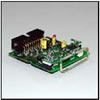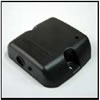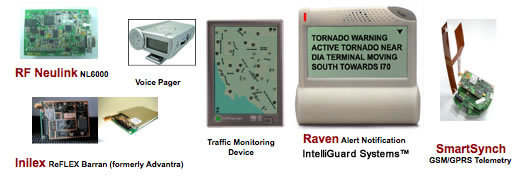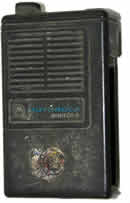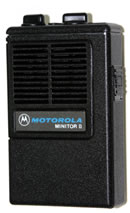BloostonLaw Telecom Update Published by the Law Offices of Blooston, Mordkofsky, Dickens, Duffy & Prendergast, LLP [Portions reproduced here with the firm's permission.] www.bloostonlaw.com |
| Vol. 13, No. 30 | July 21, 2010 |
 FCC Announces Tentative Agenda For Aug. 5 Open Meeting FCC Chairman Julius Genachowski has announced that the following items will be on the tentative agenda for the next open meeting scheduled for Thursday, August 5, 2010:
- Hearing Aid Compatibility R&O and FNPRM: A Report and Order and Further Notice of Proposed Rulemaking that benefits consumers with hearing loss by ensuring that advanced and innovative devices that provide telephone voice communications are hearing aid-compatible.
- Wireless Backhaul NPRM and NOI: A Notice of Proposed Rulemaking and Notice of Inquiry seeking to remove regulatory barriers to the use of spectrum for wireless backhaul and other point-to-point and point-to-multipoint communications, to promote broadband competition and investment in rural and non-rural areas.
BloostonLaw contacts: Hal Mordkofsky, Ben Dickens, Gerry Duffy, and John Prendergast. *** EFFECTIVE DATE OF REG FEE ORDER IS AUGUST 18: The FCC’s Report and Order, concluding its Assessment and Collection of Regulatory Fees proceeding to collect $335,794,000 in regulatory fees for Fiscal Year (FY) 2010, has been published in the Federal Register, with an effective date of August 18 (BloostonLaw Telecom Update, July 14). |
 INSIDE THIS ISSUE - FCC proposes MSS rule changes to push broadband.
- FCC launches broadband rural health care initiative.
- BloostonLaw recommends less-restrictive FAA rules.
- FCC proposes electronic access to rate information.
- FCC sets comment cycle for pole attachment further notice.
|
FCC Proposes MSS Rule Changes To Push Broadband Satellite Providers Could Become
Terrestrial Broadband Competitors At last week’s open meeting, the FCC took steps to make 90 megahertz of Mobile Satellite Service (MSS) spectrum available for terrestrial broadband use as part of its National Broadband Plan recommendation to unleash an additional 500 megahertz of spectrum. Specifically, the Commission adopted a Notice of Inquiry (NOI) and Notice of Proposed Rulemaking (NPRM) to explore spectrum allocated to MSS in three bands — the 2 GHz band, Big LEO (Low Earth Orbit) band, and the L-band (1525-1559 MHz and 1626.5-1660.6 MHz). This spectrum is able to accommodate mobile terrestrial communications. For our small and rural carrier clients, this move could create additional large competitors in the mobile and fixed broadband market place. It could also create certain opportunities, as discussed below. The NPRM outlines two proposals that would remove regulatory barriers to terrestrial use and promote additional investments in the MSS bands, while retaining sufficient market-wide MSS capability. First, it proposes to add co-primary fixed and mobile allocations to the 2 GHz band. This allocation modification sets the stage for more flexible uses of the band by terrestrial services. Second, it proposes to expand existing secondary market policies and rules to address transactions involving the use of MSS bands for terrestrial services. The FCC said this would create greater predictability in bands licensed for terrestrial mobile broadband service. The NOI requests comment on further steps the Commission can take to increase the value, utilization, innovation, and investment in MSS spectrum. It builds upon the proposals in the NPRM and addresses, in part, the recommendations of the National Broadband Plan for increasing terrestrial deployment in the MSS bands. The NOI inquires about ways to create opportunities for more expansive and efficient use of the 2 GHz band for standalone terrestrial uses. It also asks, if the value of the spectrum increases, what actions the Commission should take to further the overall public interest. The NOI further requests comment on other ways to promote innovation and investment throughout all three of the MSS bands while also ensuring market-wide mobile satellite capability to serve important needs like disaster response and recovery efforts, rural access for consumers and businesses across America, and various government uses. Notice of Proposed Rulemaking The FCC tentatively concluded to add primary Fixed and Mobile allocations to the 2000-2020 MHz and 2180-2200 MHz bands. This allocation will be co-primary with the existing Mobile Satellite allocation for these bands. By making this allocation, the FCC said it laid the groundwork for future flexibility in the use of this spectrum and will bring the allocation for this band into harmony with international allocations. The FCC said the proposal to add Fixed and Mobile allocations is the first step to providing additional flexibility to the 2 GHz MSS bands. The existing service rules continue to permit MSS and ancillary terrestrial component (ATC) operation and are not altered by the re-introduction of a Fixed and Mobile allocation to the band. The existing MSS licensees, both of which have launched satellites, will continue to be able to operate under the terms of their licenses and must continue to comply with all of the Commission’s existing ATC rules. In the NOI, the FCC seeks comment on additional steps to create the opportunity for expanded use of the 2 GHz band for terrestrial services. Secondary Market Rules and Procedures for Terrestrial Services in MSS Bands: The FCC seeks to modify its policies and procedures with regard to spectrum leasing arrangements between MSS licensees and third parties for the provision of terrestrial services using MSS spectrum. Specifically, it proposes to allow spectrum leasing arrangements between an MSS operator in the 2 GHz, Big LEO, and L-bands and a third party entity involving the use of MSS spectrum for the provision of terrestrial services to the Commission’s general secondary market spectrum leasing policies and rules that currently apply to wireless terrestrial services. This proposal would apply to all terrestrial use of the MSS spectrum in the 2 GHz, Big LEO, and L-bands, which currently consists of ATC operations, but in the future may include other terrestrial operations in the 2 GHz MSS band. The proposal aims to provide greater regulatory predictability and parity, so that a common set of policies and rules applies for spectrum leasing arrangements involving the provision of terrestrial services, independent of the underlying allocation. The FCC starts with the premise that the Commission’s general spectrum leasing framework currently applicable to all terrestrial Wireless Radio Services spectrum leasing arrangements should apply to MSS/ATC spectrum leasing arrangements. Accordingly, the FCC said it would require that leasing parties submit specified information and certifications (including information about the parties, the amount and geographic location of the spectrum involved, and other overlapping terrestrial-use spectrum holdings of the parties) to the Commission in advance of any operations that would be permitted pursuant to the proposed transaction. As with proposed spectrum leasing arrangements involving Wireless Radio Services, to the extent a proposed arrangement does not raise potential public interest concerns, the transaction would be subject to immediate processing or approval, whereas to the extent potential public interest concerns were raised (e.g., potential competitive harms) the transaction would be subject to streamlined procedures as the Commission evaluated whether the public interest would be served by the proposed transaction. Notice of Inquiry Here the FCC launches a broader inquiry into how it can best increase the value, utilization, innovation and investment in the spectrum for terrestrial services throughout the 2 GHz, Big LEO and L-bands, while ensuring that the U.S. market, as a whole, continues to have robust mobile satellite service capabilities. The FCC focuses on flexibility for deploying new mobile broadband services under the proposed co-primary Fixed and Mobile allocations in the 2 GHz band. The FCC also is interested in additional options for increasing terrestrial use of the Big LEO and L-bands. The National Broadband Plan recommends that Congress consider expressly expanding the FCC’s authority to enable it to conduct incentive auctions in which incumbent licensees may relinquish rights in spectrum assignments to other parties or to the FCC in exchange for a portion of the proceeds realized by the auction of new spectrum licenses. That is, existing licensees could, on a voluntary basis, relinquish bandwidth in exchange for a portion of the proceeds from an auction for the new licenses authorizing terrestrial only services. Would voluntary incentive auctions, if Congress were to grant such authority to the FCC, be an appropriate mechanism for providing an option for incumbent 2 GHz MSS licensees to vacate the band in favor of mobile broadband providers operating on new licenses? Alternatively, are there other approaches that could create licenses that would attract the substantial investment necessary to launch new mobile broadband services in the 2 GHz band and that are within the Commission’s existing legal authority? Should existing 2 GHz MSS licensees be given the option to return some of their spectrum (which the FCC could then auction to new terrestrial licensees) while concurrently modifying the MSS licensees’ authorizations to allow them to operate terrestrial networks under the proposed Fixed and Mobile allocations instead of under the current ATC service rules? What is an appropriate metric for assessing how much bandwidth should be returned in exchange for modifying the existing MSS licenses? What, if any, additional conditions — such as buildout requirements for terrestrial networks — are appropriate or necessary to serve the public interest? As noted in the National Broadband Plan, the 2 GHz MSS band is adjacent to the Advanced Wireless Services—2 paired "J" block at 2020-2025 MHz and 2175-2180 MHz. In any of the scenarios discussed above, would the opportunity to integrate the J Block and 2 GHz MSS spectrum help attract new investment and utilization of new mobile broadband networks in the 2 GHz band? If so, the FCC seeks comment on how the Commission could and whether it should take into account such potential as it decides how to increase utilization of the 2 GHz MSS spectrum for terrestrial use. Comments in this ET Docket No. 10-142 proceeding will be due 30 days after publication of the item in the Federal Register, and replies will be due 15 days thereafter. BloostonLaw contacts: Hal Mordkofsky, John Prendergast, and Cary Mitchell. FCC Launches Broadband Rural Health Care Initiative The FCC, at its July open meeting, introduced a new health care connectivity program that would expand investment in broadband for medically underserved communities. The program would give patients in rural areas access to state-of-the-art diagnostic tools typically available only in the largest and most sophisticated medical centers. According to the Commission, the program’s investment in broadband connectivity would not only improve medical care, but also help reduce healthcare costs. It would spur private investment in networks as well as health-related applications, and would help create jobs that range from building infrastructure to developing and implementing health IT solutions. The FCC said this program has the potential to do for rural health care providers and patients what the E-rate program has done for schools and libraries. The FCC said this program would invest up to $400 million annually to enable doctors, nurses, hospitals and clinics to deliver, through communications technology, world-class health care to patients, no matter where they live. It is one of four programs in the Universal Service Fund administered by the FCC. Without increasing the projected size of the overall fund, the Notice of Proposed Rulemaking (NPRM) adopted at the open meeting would bring affordable broadband connectivity to more than 2,000 rural hospitals and clinics. It builds on the lessons learned in the successful Rural Health Care Pilot Program — launched in 2007 and set to expire next year — and is consistent with the recommendations in the FCC’s National Broadband Plan. Proposals include: - Partnering with public and nonprofit health care providers to invest millions in new regional and statewide broadband networks in parts of the country where it is unavailable or insufficient. The new program would help build cost-effective broadband networks — connecting doctors, hospitals and clinics — designed to meet today’s health care needs.
- Making broadband connectivity more affordable by sharing half of the monthly recurring network costs with hospitals, clinics and other health care providers. This enhanced support for broadband connectivity will benefit patients served by thousands of public and non-profit rural health care providers.
- Delivering connectivity where it is needed most today, including at skilled nursing facilities and renal dialysis centers, along with offsite administrative offices and data centers that perform support functions critical to health care networks.
Comments in this WC Docket No. 02-60 proceeding will be due 30 days after publication in the Federal Register, and replies will be due 15 days thereafter. BloostonLaw contacts: Ben Dickens, Gerry Duffy, and Mary Sisak. BloostonLaw Recommends Less Restrictive FAA Rules In comments on the FCC’s Notice of Proposed Rulemaking (NPRM) regarding various matters to streamline its regulation of antenna structure obstruction marking and lighting, BloostonLaw, on behalf of its clients, has focused on how this proceeding may be affected by the Federal Aviation Administration’s (FAA’s) ongoing rulemaking proceeding initiated in June 2006. BloostonLaw asks the FCC to avoid adopting an overly-broad set of rules that would undercut the ability of licensees to quickly deploy facilities, using their market area license authority, special temporary authority (STA) or conditional temporary authority (CTA). BloostonLaw believes that the FAA’s proposal is too far-reaching, and that less restrictive steps can be taken to protect air-navigation while allowing for the efficient processing of wireless applications. The FAA’s proposal to require notice and FAA review of certain frequency proposals will undermine the FCC’s efforts to streamline its application and licensing processes, as reflected in its current rules for conditional temporary authority, special temporary authority, and flexible licensing policy associated with its geographic licensing scheme. Proposed FAA Rule Section 77.10(e)(1) provides that notice to the FAA will be required for the construction of a new facility or modification of an existing facility which supports a radiating elements for the purpose of radio frequency transmission operating on various frequencies between 54-108 MHz and 21.2-23.6 GHz. In essence, the FAA would require clearance for tower construction and/or antenna mountings that have no affect on the glide slope of an aircraft landing area, just so the FAA could regulate which frequency is used on the structure. BloostonLaw said that a review of the proposed rule section suggests that any frequency proposal in any of the affected bands would require notice to the FAA, regardless of output power, height above average terrain or distance from FAA aeronautical aids and facilities. BloostonLaw believes that there are less restrictive alternatives that could be used by the FAA to ensure that its facilities that are necessary for the protection of air-navigation do not experience harmful interference from FCC authorized facilities. This is especially relevant since the FAA has not articulated that an emergency exists due to harmful interference from land mobile and other terrestrial radio facilities. BloostonLaw believes the FAA should adopt a height/power threshold. The creation of a height power threshold will eliminate the requirement for notice associated low-power operations that are not typically licensed by the FCC on a site-specific basis. In this way, the FAA will be able to eliminate numerous frequency proposals that would otherwise overwhelm its processing staff. In this regard, the FCC has recognized that licensing low-power operations on a “mobile” basis within a mobile area of operation has relieved the industry and the FCC’s staff of a multitude of filings, especially as facilities are relocated in order to meet changing business needs. Related to the height/power threshold would be the creation of a publicly searchable database similar to the Commission’s TOWAIR database and the FAA’s Notice Criteria Tool that is available for proponents to determine if a proposed antenna structure would require notice to the FAA due to its proximity to a protected aircraft landing area. In this regard, the FAA could collect information concerning the frequency proposal, including: frequency, geographic coordinates, output power and antenna height above ground level in order to determine if notice would be required, based upon the location of the FAA’s air-navigational aids. To the extent that the frequency proposal is located far enough away from the FAA’s air-navigational aids, the FAA could indicate that no notice is required, much like it does for proposed antenna structures that do not penetrate the glide slope into the nearest protected aircraft landing area. The FAA’s response should be instantaneous. If the FAA does not take any steps to limit the filing of notices, it will be inundated with Form 7460-1 Notices, despite its assertion that it is already receiving the vast majority of such notices from cellular and Broadband PCS providers. This assertion does not take into account the volume of notices that would be triggered by the private land mobile services, public safety services, paging companies, private and common carrier microwave operators, and 900 MHz MAS operators, to name a few. In certain circumstances, the affected bands will also include geographic market area licensees who expected that streamlined licensing, i.e., geographic area licensing, would significantly reduce the potential for delays in system deployment. BloostonLaw is concerned that without relief from the FAA’s proposal, these delays could add several weeks, if not months to the timeline for design and deployment of radio systems that would otherwise not have an adverse impact on FAA navigable aids. The FAA will be inundated with Form 7460-1 Notices if it insists on reviewing each and every frequency proposal in the affected bands without regard to height and power thresholds. Currently, it takes the FAA several weeks to process routine Form 7460-1 Notices. BloostonLaw can only imagine that the processing time will increase exponentially if the FAA does not streamline its proposal, thereby adding significant delays and unnecessarily reducing carriers’ ability to respond to customer demands for service. This outcome would undercut the Commission’s special temporary authority, conditional temporary authority and market area licensing mechanisms, which are vital tools in allowing wireless carriers and Part 90 private internal users to be responsive to the marketplace and their internal use needs. Moreover, consumers would be unnecessarily harmed. Customers of various wireless licensees often have radios installed at their homes or businesses as “mobiles,” as allowed by the Commission’s Rules. If the wireless service provider must tell their customers that they have to wait several weeks or months before service can commence (due to the need for FAA clearance), it will significantly lessen the usefulness of the wireless service and further contribute to the economic downturn. Thus, BloostonLaw urges the FCC to recommend that the FAA revisit its proposal and require the filing of a notice for only those frequency proposals that truly have the potential to interfere with the FAA’s air-navigational aids. BloostonLaw does not dispute the importance of ensuring safety to air-navigation, but recognizes that it must be done in a balanced manner so that the FCC’s licensing process is not unduly hindered. BloostonLaw contacts: Hal Mordkofsky, John Prendergast, and Richard Rubino. FCC PROPOSES ELECTRONIC FILING OF ALL TARIFFS: The FCC, at last week’s open meeting, proposed completing the transition to electronic filing of tariffs, which disclose the rates, terms and conditions set by certain carriers. The proposal is part of the FCC’s broader Data Innovation Initiative to modernize and streamline how the agency collects, uses, and disseminates data. Announced last month, the Data Innovation Initiative is part of a comprehensive reform effort that the FCC said is improving the agency’s fact-based, data-driven decision-making. Moving toward electronic filing whenever possible reduces costs and makes information more available and accessible, not only saving time and money but also making it easier for citizens to participate in their government. While electronic tariff filing has been mandatory for dominant carriers since 1998, non-dominant carriers still file by paper and computer disk. Under the Notice of Proposed Rulemaking (NPRM) adopted at the open meeting, non-dominant carriers would file their tariffs using the FCC’s existing Electronic Tariff Filing System. The NPRM also proposed standardizing tariff filings to ease review by the public and the FCC. Online filing of tariffs will afford the public and the FCC with immediate access to new tariffs filed by non-dominant carriers, providing more opportunity for review and comment. The change will also reduce the burden on carriers and FCC staff associated with filing and administering paper records. Comments in this WC Docket No. 10-141 proceeding will be due 30 days after publication in the Federal Register, and replies will be due 15 days thereafter. BloostonLaw contacts: Ben Dickens, Gerry Duffy, and Mary Sisak. FCC SETS COMMENT CYCLE FOR POLE ATTACMENT FURTHER NOTICE: The FCC has set a comment cycle for its Further Notice of Proposed Rulemaking (FNPRM) proposing rules to expedite access by telecommunications carriers and cable operators to utility poles. Proposed measures include adoption of a specific timeline for pole surveys and make-ready work, use of outside contractors, and improving the availability of data. The FNPRM also proposes to improve the pole attachments enforcement process, and proposes ways to make attachment rates as low and uniform as possible consistent with Section 224 of the Communications Act. These steps should lower both the cost of gaining access to utility poles and pole attachment rates. These actions are intended to remove impediments to the deployment of facilities and to increase delivery of broadband services. Comments in this WC Docket No. 07-245 proceeding are due August 16, and replies are due September 13. Written comments on the Paperwork Reduction Act proposed information collection requirements must be submitted to the Office of Management and Budget (OMB) by September 13. BloostonLaw contacts: Ben Dickens, Gerry Duffy, and Mary Sisak. FCC SETS AUGUST 18 AS EFFECTIVE DATE FOR 6 GHz & 23 GHz WIRELESS BACKHAUL R&O: The FCC has published an August 18 effective date for its Report and Order to enhance the flexibility and speed with which companies can obtain access to spectrum for use as wireless backhaul (BloostonLaw Telecom Update, June 16). Specifically, the Report and Order makes two revisions to the Part 101 rules governing terrestrial fixed wireless services in the 6525-6875 MHz band (Upper 6 GHz Band) and 21.8-22.1 GHz and 23.0-23.3 GHz band (23 GHz Band). First, the FCC said it provides fixed terrestrial wireless licensees with authority to operate channels with wider bandwidths of as much as 30 megahertz in the Upper 6 GHz Band (only 10 MHz bandwidth is now permitted). Second, the FCC said it allows applicants to operate pursuant to conditional authority on two additional channel pairs in the 23 GHz Band. Allowing wider bandwidth channels in the Upper 6 GHz Band makes an additional source of spectrum for high-capacity microwave links more readily available, and precludes the need for rule waivers. Finally, the FCC said that expanding conditional authority in the 23 GHz Band will enable licensees to activate microwave links more quickly, including links involved in critical commercial, backhaul, and public safety applications. BloostonLaw contacts: Hal Mordkofsky, John Prendergast, and Richard Rubino. 2nd CIRCUIT STRIKES DOWN N.Y. TOWN’s TOWER ORDINANCE: The 2nd U.S. Circuit Court of Appeals in New York has affirmed a lower court decision to strike down a cell tower ordinance passed by the Town of Clarkstown in Rockland County, N.Y. In New York SMSA Limited Partnership PCS LLC USA v. Town of Clarkstown, the 2nd Circuit held that the local law was preempted by federal communications law. The ordinance was intended to give the Town the ability to control visual and aesthetic aspects of wireless telecommunications facilities and, in particular, sought a “preference” in residential areas for smaller and less intrusive antennas. Essentially, the ordinance set up a multistage application process, under which permits were pre-screened based on factors such as the use of “preferred alternate technology,” such as “microcell” or “distributed antenna system.” Siting proponents that did not utilize a “preferred technology” were required to submit information regarding radio frequencies and to certify that their proposed antennas would not interfere with existing telecommunications devices. Verizon Wireless and three other carriers challenged the ordinance on federal preemption grounds. The 2nd Circuit agreed, noting particularly that the “preference for alternative technologies” is preempted because it interferes with the federal government’s regulation of technical and operational aspects of wireless telecommunications technology. BloostonLaw contacts: Hal Mordkofsky, John Prendergast, and Cary Mitchell. SECTION 706 REPORT FINDS UP TO 24 MILLION WITHOUT BROADBAND ACCESS: The FCC’s Sixth Annual Section 706 Report indicates that while a substantial majority of Americans have access to broadband connections capable of “originat[ing] and receiv[ing] high-quality voice, data, graphics, and video telecommunications,” roughly 80 million American adults do not subscribe to broadband at home, and approximately 14 to 24 million Americans remain without broadband access capable of meeting the requirements set forth in Section 706 of the Telecommunications Act. Notwithstanding tremendous efforts by industry and government, those Americans will not gain such access in the near future absent changes in policy, the FCC said. Accordingly, the FCC concluded that broadband deployment to all Americans is not reasonable and timely. This conclusion departs from previous broadband deployment reports, which held that even though certain groups of Americans were not receiving timely access to broadband, broadband deployment “overall” was reasonable and timely. As a consequence of that conclusion, Section 706 mandates that the Commission “take immediate action to accelerate deployment of [advanced telecommunications] capability by removing barriers to infrastructure investment and by promoting competition in the telecommunications market.” The Commission will fulfill that requirement in part by addressing the proposals for Commission action set forth in the National Broadband Plan. These include: - Reforming the FCC’s universal service programs to support broadband through public-private partnerships;
- Unleashing spectrum for mobile broadband;
- Reducing barriers to infrastructure investment, including delays in access to poles and rights-of-way;
- Collecting better broadband data to assist policymakers and consumers.
The report also takes the step of updating a key standard — speed — used to determine whether households are served by broadband. It upgrades the standard from 200 kilobits per second downstream, a standard set over a decade ago when web pages were largely text-based, to 4 megabits per second (Mbps) downstream and 1 Mbps upstream. BloostonLaw contacts: Ben Dickens, Gerry Duffy, and Mary Sisak. NEW SPECTRUM INVENTORY BILL ALSO HAS AUCTION PLAN: Senators John Kerry (D-Mass.) and Olympia Snowe (R-Maine) have introduced S.3610, The Spectrum Measurement and Policy Reform Act, which directs the FCC and the National Telecommunications and Information Administration (NTIA) to perform spectrum measurements to determine actual usage and occupancy rates between 100 MHz and 10 GHz. However, the bill also includes provisions for an auction revenue sharing plan and spectrum license fees. The FCC’s National Broadband Plan recommends auctioning 120 MHz of TV broadcast spectrum for mobile broadband use. But the Commission does not have the authority to do that without Congressional approval. S.3610 may very well be the beginning of a process to amend the Communications Act to give the FCC the auction authority it wants for its National Broadband Plan. BloostonLaw contacts: Hal Mordkofsky, John Prendergast, and Cary Mitchell.  This newsletter is not intended to provide legal advice. Those interested in more information should contact the firm. |






















